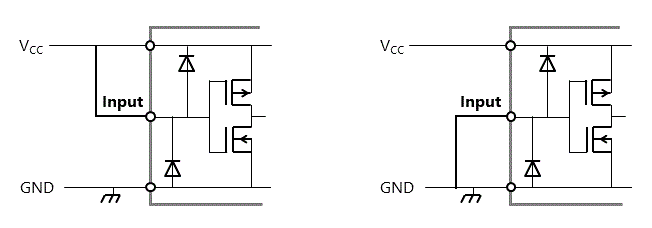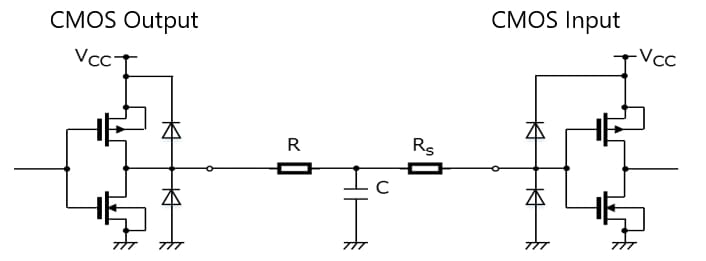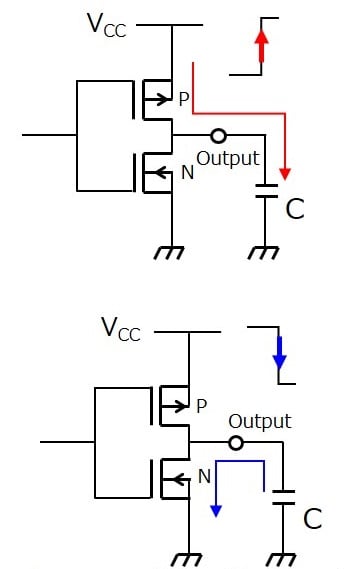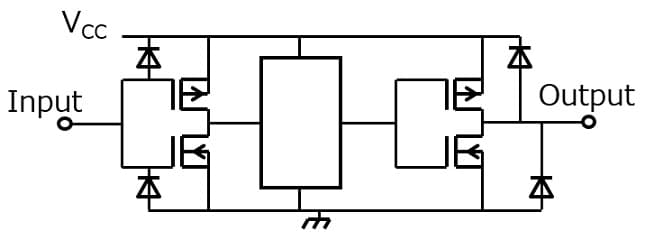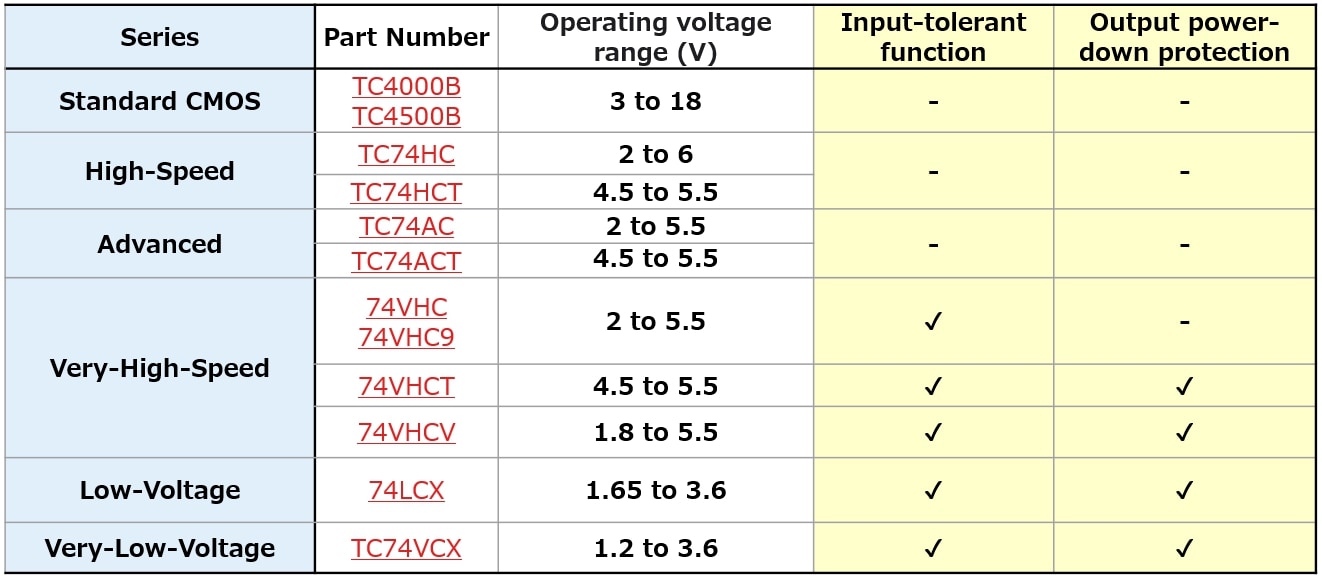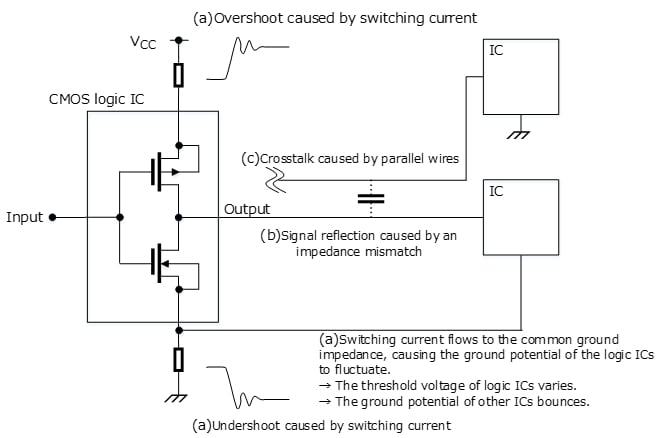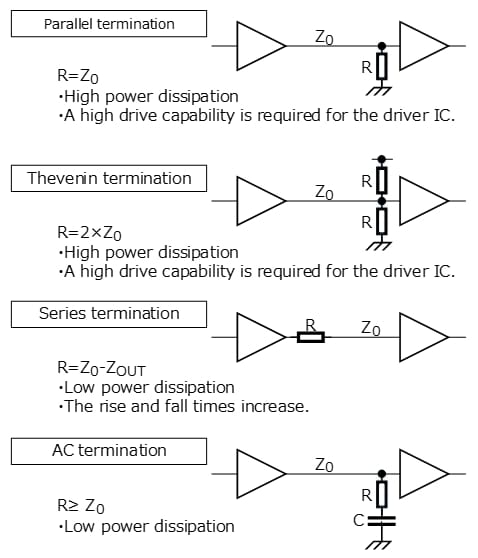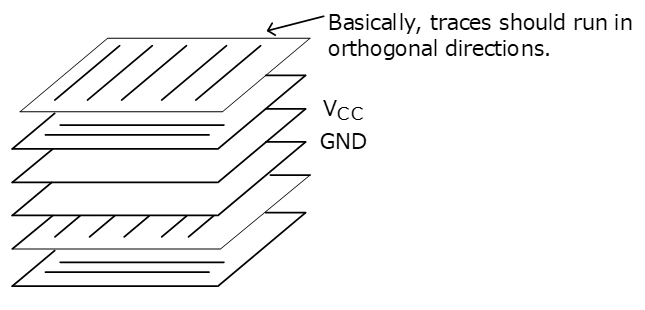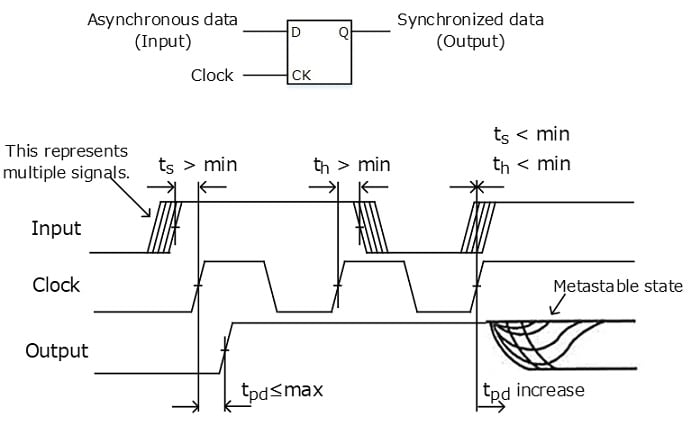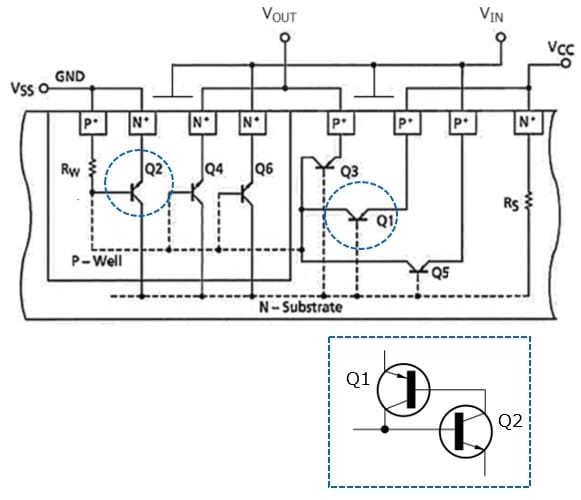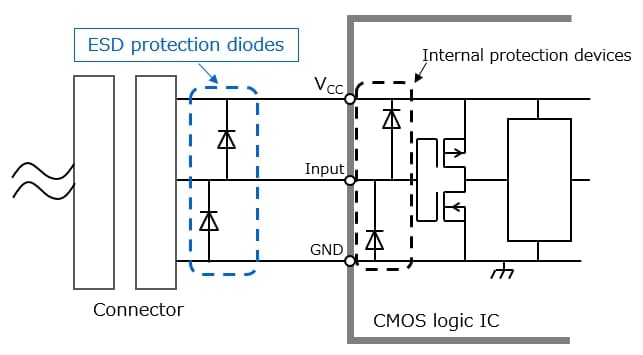- General Top
- SEMICONDUCTOR
- STORAGE
- COMPANY
-
My ToshibaSemicon
- Semiconductor Top
-
ApplicationsAutomotive
Body Electronics
xEV
In-Vehicle Infotainment
Advanced Driver-Assistance Systems (ADAS)
Chassis
IndustrialInfrastructure
BEMS/HEMS
Factory Automation
Commercial Equipment
Consumer/PersonalIoT Equipment
Healthcare
Wearable Device
Mobile
Computer Peripherals
-
ProductsAutomotive Devices
Discrete Semiconductor
Diodes
Transistors
Logic ICs
Analog Devices
Digital Devices
Wireless Devices
※
: Products list (parametric search)
Power SemiconductorsSiC Power Devices
※
: Products list (parametric search)
Isolators/Solid State RelaysPhotocouplers
Digital Isolators
Solid State Relays
Fiber Optic Transmitting Modules
※
: Products list (parametric search)
MOSFETsIGBTs/IEGTsBipolar Transistors※
: Products list (parametric search)
Diodes※
: Products list (parametric search)
MicrocontrollersMotor Driver ICsIntelligent Power ICs※
: Products list (parametric search)
Power Management ICsLinear ICs※
: Products list (parametric search)
General Purpose Logic ICsLinear Image SensorsOther Product ICsOther Product ICs
※
: Products list (parametric search)
-
Design & Development
-
Knowledge
- Where To Buy
- Part Number & Keyword Search
- Cross Reference Search
- Parametric Search
- Stock Check & Purchase
This webpage doesn't work with Internet Explorer. Please use the latest version of Google Chrome, Microsoft Edge, Mozilla Firefox or Safari.
require 3 characters or more. Search for multiple part numbers fromhere.
The information presented in this cross reference is based on TOSHIBA's selection criteria and should be treated as a suggestion only. Please carefully review the latest versions of all relevant information on the TOSHIBA products, including without limitation data sheets and validate all operating parameters of the TOSHIBA products to ensure that the suggested TOSHIBA products are truly compatible with your design and application.Please note that this cross reference is based on TOSHIBA's estimate of compatibility with other manufacturers' products, based on other manufacturers' published data, at the time the data was collected.TOSHIBA is not responsible for any incorrect or incomplete information. Information is subject to change at any time without notice.
require 3 characters or more.
1-3. Multiple Outputs from a General-Purpose CMOS Logic IC Come Into Conflict (Short-Circuiting)
Unlike diodes, the outputs of typical CMOS logic ICs cannot be wired-ORed together, except those with three-state outputs. Even in the case of CMOS logic ICs with three-state outputs, unintended current might flow, causing IC degradation, if they are enabled simultaneously. When creating a circuit design, ensure that multiple outputs will not be enabled at any given time. Also, the outputs of CMOS logic ICs without bushold become unstable if all of them are disabled (i.e., assume the High-Z state) without being pulled up to VCC or down to GND.
- For a description of logic transitions of three-state bus buffers, see the following FAQ entry.
FAQ : Do bidirectional bus buffers have any constraints on the timing of the direction (DIR) and other input signals? - For a description of bushold, see the following FAQ entry.
FAQ : What is bushold?
Only the gates in the same package may be wired-ANDed to increase the drive capability (i.e., output current). However, it is recommended to use high-drive ICs (with an IO of ±24 mA) instead.
- For a description of high-drive CMOS /logic ICs, see the DC Characteristics table shown in the FAQ entry
FAQ : How many amperes of current can an output pin drive?
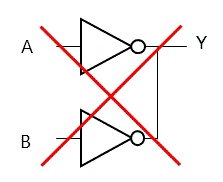
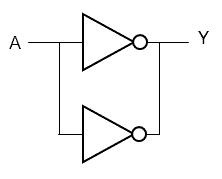
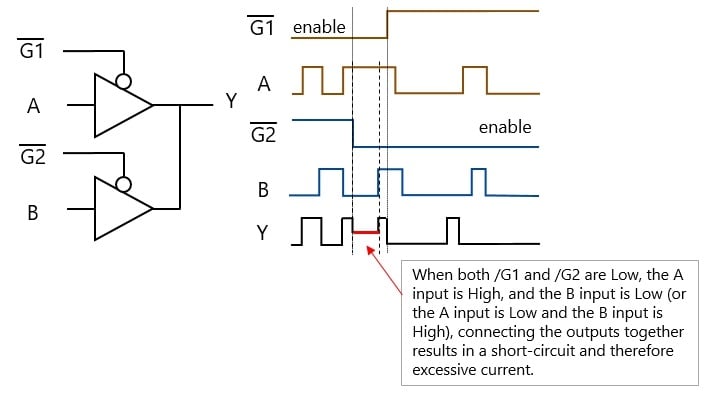
Usage Considerations of CMOS Logic ICs
Products
Related information
- Application Notes
- FAQ


